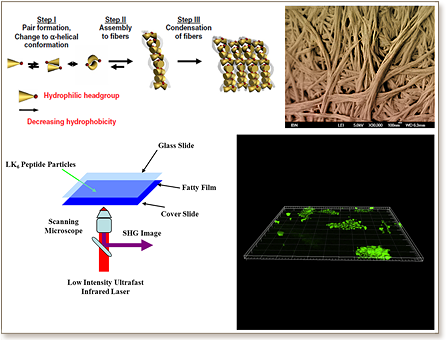
Roadmap on biosensing and photonics for nanomedicine
E. Di Fabrizio, S. Schlücker, J. Wenger, R. Regmi, H. Rigneault, G. Calafiore, M. West, S. Cabrini, M. Fleischer, N. van Hulst, M.F. Garcia-Parajo, A. Pucci, D. Cojoc, C.A.E. Hauser, and M. Ni
Journal of Optics 18 (2016) 063003

This roadmap, through the contributions of ten groups worldwide, contains different techniques, methods and materials devoted to sensing in nanomedicine. Optics is used in different ways in the detection schemes. Raman, fluorescence and infrared spectroscopies, plasmonics, second harmonic generation and optical tweezers are all used in applications from single molecule detection (both in highly diluted and in highly concentrated solutions) to single cell manipulation. In general, each optical scheme, through device miniaturization and electromagnetic field localization, exploits an intrinsic optical enhancement mechanism in order to increase the sensitivity and selectivity of the device with respect to the complex molecular construct. The materials used for detection include nanoparticles and nanostructures fabricated with different 2D and 3D lithographic methods. It is shown that sensitivity to a single molecule is already accessible whether the system under study is a single cell or a multitude of cells in a molecular mixture. Throughout the roadmap there is an attempt to foresee and to suggest future directions in this interdisciplinary field.
DOI: 10.1088/2040-8978/18/6/063003

"KAUST shall be a beacon for peace, hope and reconciliation, and shall serve the people of the Kingdom and the world."
King Abdullah bin Abdulaziz Al Saud, 1924 – 2015
Thuwal 23955-6900, Kingdom of Saudi Arabia
Al-Haytham Building (Bldg. 2)
© King Abdullah University of Science and Technology. All rights reserved